Travel around the solar system
 Bashny.Net
Bashny.Net
Interplanetary automatic scouts of NASA, the European Space Agency and the other is currently gathering information about our solar system. Right now, the spacecraft are in orbits the Sun, Mercury, Venus, Earth, Mars and Saturn, while others are flying in a small space objects.
Due to the astronauts and to all mechanical automatic scouts in space, we have the opportunity to see the "family" pictures of our solar system.
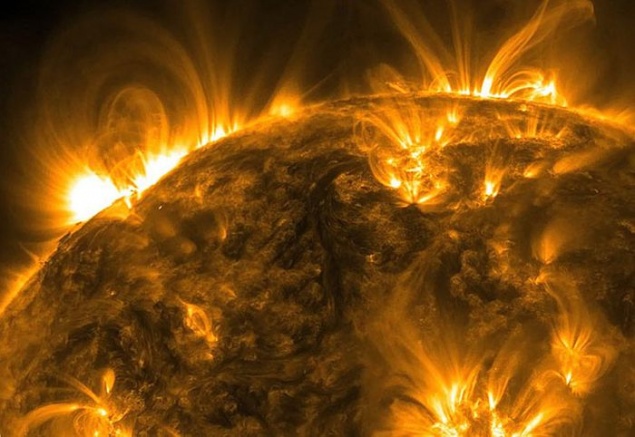
This Pan-STARRS - the solar non-periodic comet. In March 2013 it can be seen with the naked eye, while it was near perihelion. Named in honor of her telescope Pan-STARRS, located on the island of Maui (Hawaii).
This picture of the comet made March 15, 2013 from the machine Stereo Behind, is part of one of the most unusual projects to study the sun. For example, one unit orbits located slightly closer to the Sun, the Earth, the other - a little further. As a result, Stereo Ahead and Stereo Behind send pictures taken from different angles simultaneously. This allows you to create a three-dimensional picture of the observations.
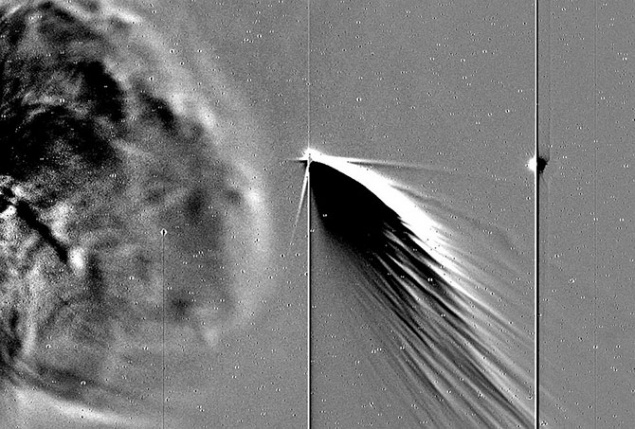
The release of the substance from the solar corona - the outer atmosphere of the Sun, November 19 2012.
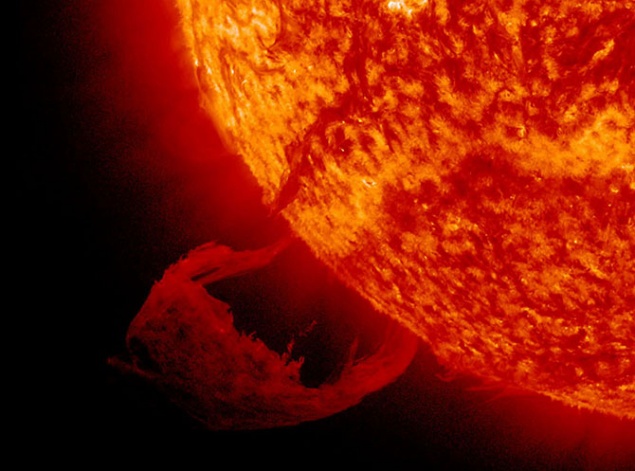
Mercury - the closest planet to the Sun of the Solar System. The physical characteristics of Mercury resembles the Moon. It has no natural satellites, but there is a very thin atmosphere. The temperature on Mercury's surface ranges from -180 to +430 ° C. The photo was taken from the American automatic interplanetary station for the study of Mercury Messenger.

Mercury - the smallest of the terrestrial planets. Its radius is only 2440 ± 1.0 km, which is less than the radius of Jupiter's moon Ganymede and Saturn's moon Titan. Comparative sizes of the planets (left to right: Mercury, Venus, Earth, Mars):
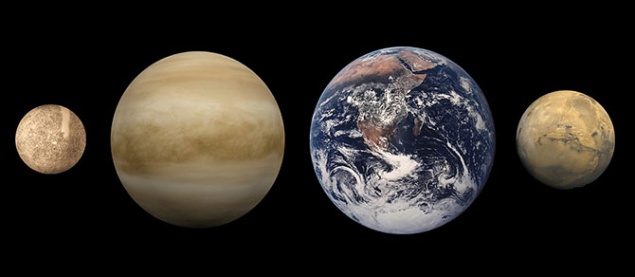
Kertész crater on Mercury. It is named in honor of Andre Curtis (Andre Kertesz), the American photographer of Hungarian origin. The diameter of the crater is 33 km away.
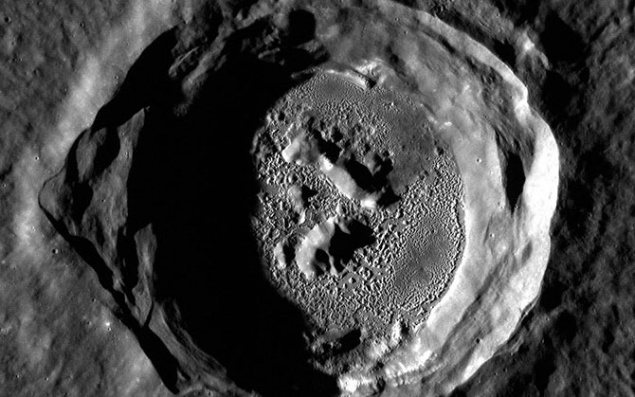
This is Venus - the second planet of the inner solar system. Its relative dimensions shown in the 4 th pictures. Venus is classified as Earth-like planets, and sometimes it is called "Earth's sister planet" because the two planets are similar in size, gravity and composition. In space standards Venus - a young planet, and the surface of Venus about 500 million years.
In ancient times, Venus is believed to be warmed up so that like Earth's oceans, which are believed she had completely evaporated, leaving behind a barren landscape with lots of rocks plitopodobnyh. The atmospheric pressure on the surface of Venus to 92 times greater than in the world.
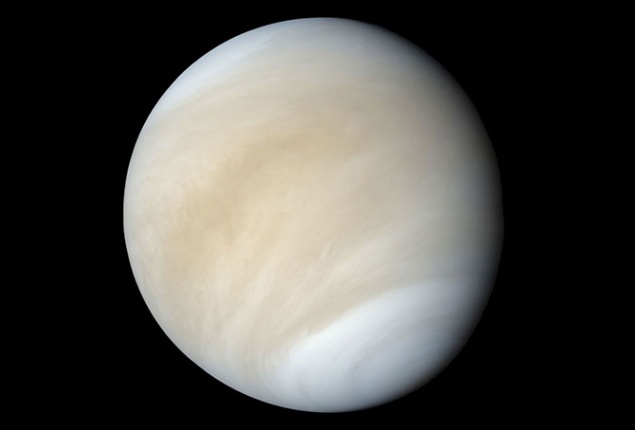
Gamma-Gruytuyzen Crater on the Moon on October 28, 2012. Its diameter - 20 km.
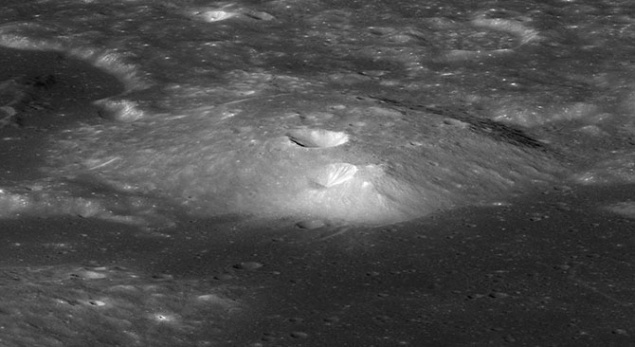
Photo of our Earth from meteorological satellites of EUMETSAT 29 January 2013.

Japanese astronaut Akihiko Hoside went into space with the ISS on November 1, 2012. Contrary to popular conceptions, the space is not completely empty space - in it there is a very low density of some particles (mostly hydrogen), and electromagnetic radiation. Also, there is still no consensus on what constitutes a factor in the beginning of the cosmos, as the atmosphere is gradually diluted as the distance from the Earth's surface.
According to NASA scientists, contrary to popular belief, if it enters the open space without a protective suit people will not freeze, do not explode and instantly lost consciousness, his blood boils. Instead, there will be a quick death from lack of oxygen.

Northern Lights, Alaska, March 17, 2013. 1000-1100 km - the maximum height of auroras visible from the last manifestation of the Earth's atmosphere.

Crater Lake - a body of water formed by a volcanic crater filled with water. In this picture, the province of Quebec, made from the satellite, shows two circular crater lake is not covered with snow - Pingualuit and Couture. Both craters were formed millions of years ago by the impact of meteorites on the Earth's surface.
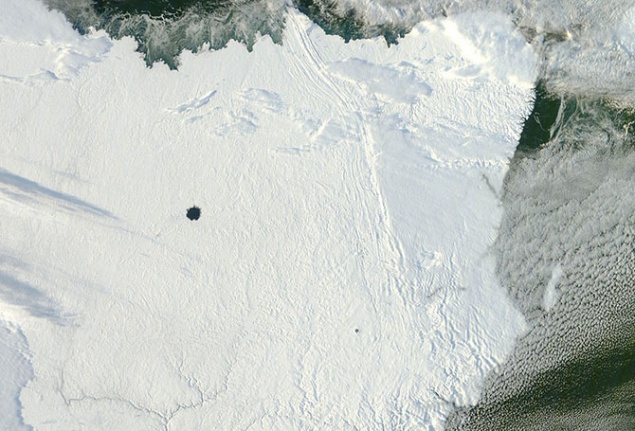
The plane on a background of the rising moon, February 25 2013.
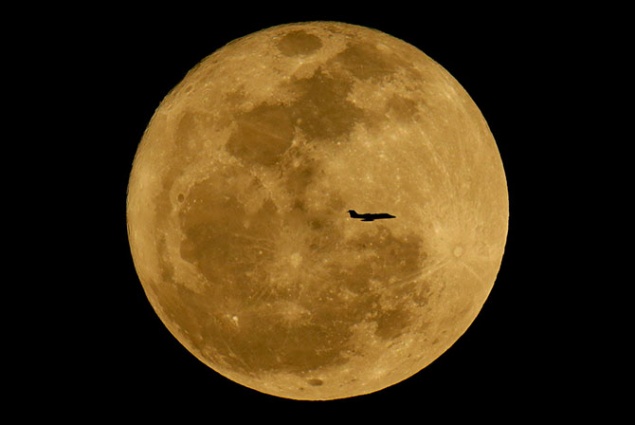
Next from the falling meteorite in Chelyabinsk, February 15 2013.

The test rocket launch "Antares", developed by the American company Orbital Sciences Corporation, and is intended to deliver cargo to the International Space Station on April 21, 2013. This launch we have already talked in detail.
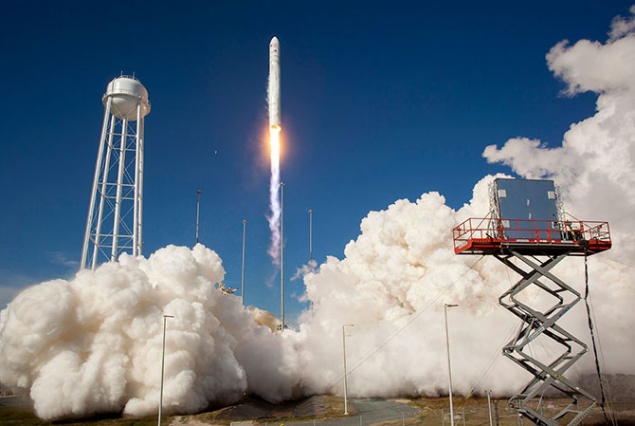
7 December 2012 it was 40 years since the launch of "Apollo 17" - manned spacecraft, which has been carried out the sixth and last in the "Apollo program" the landing of men on the moon. This photo was taken in 1972 on board the ship "Apollo 17". It is seen as the Earth rises above the lunar horizon.
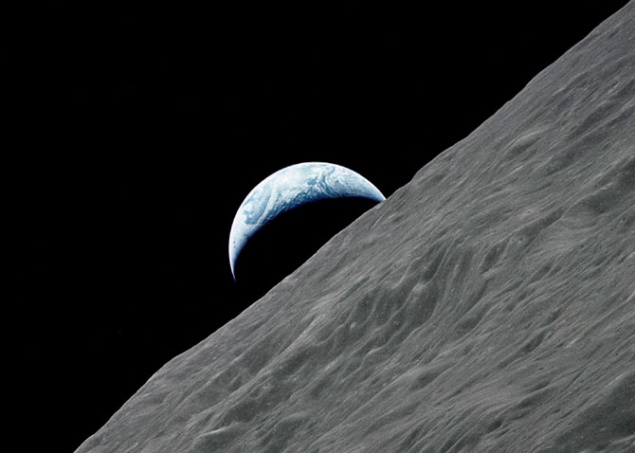
Self rover Curiosity - agent seeking life on Mars, February 3, 2013.
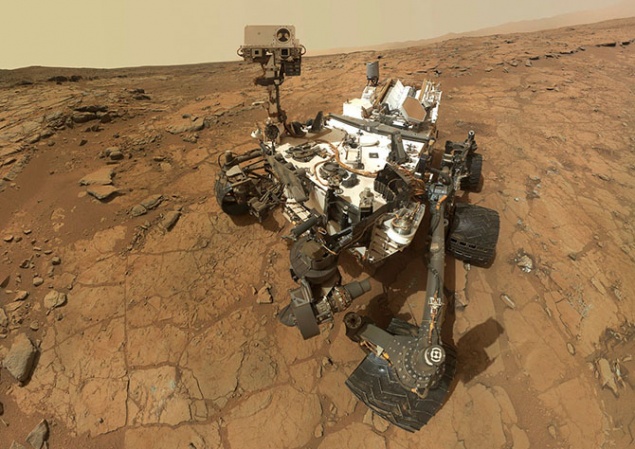
For the rover Curiosity watching spacecraft Mars Reconnaissance Orbiter, located on the Martian orbit. In this picture there are traces of the tracks of the rover on the surface of the Red Planet on January 2, 2013.
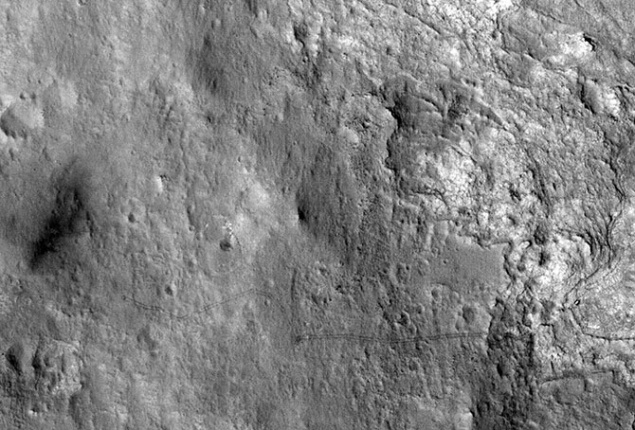
Eolida or Mount Sharp - Gale Crater central peak on the planet Mars, 20 September 2012. The main objective of the scientific mission of the rover Curiosity is a research area of the foot of Mount Sharp.
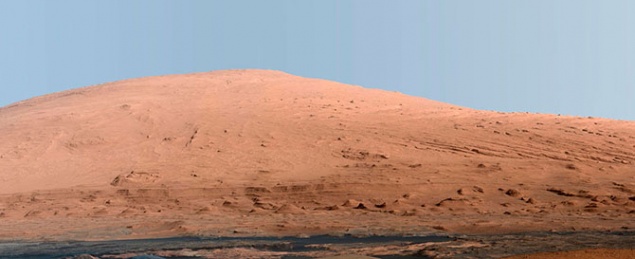
February 8, 2013 the American rover Curiosity to Mars drilled hole (diameter 1.6 cm, depth 6.4 cm) and obtained a sample of the soil.
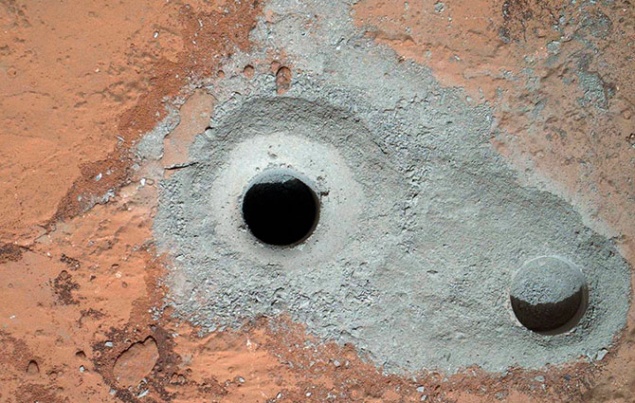
Ravines on the asteroid Vesta. This is one of the largest asteroids in the main asteroid belt. Among asteroids ranked first by weight and the second largest after Pallas. Vesta was discovered March 29, 1807 by Heinrich Wilhelm Olbers, and at the suggestion of Carl Gauss received the name of the Roman goddess of home and hearth of Vesta.
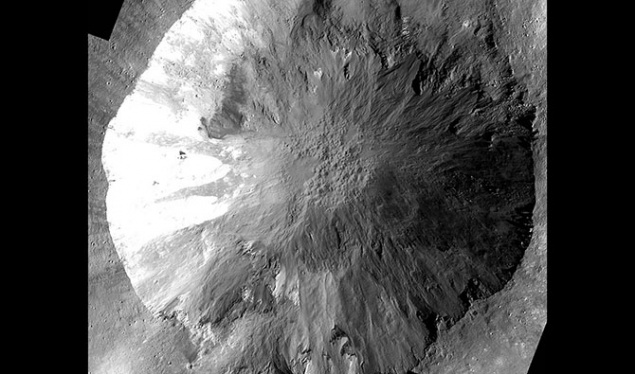
Sunrise on Saturn. In the upper part of the picture you can see how the edge of the planet Venus appeared. White stripe - Saturn's ring G, consisting of ice and dust, a width of 8 000 km. The photo was taken from the robotic Cassini spacecraft, which was created jointly by NASA, the European Space Agency and the Italian Space Agency.
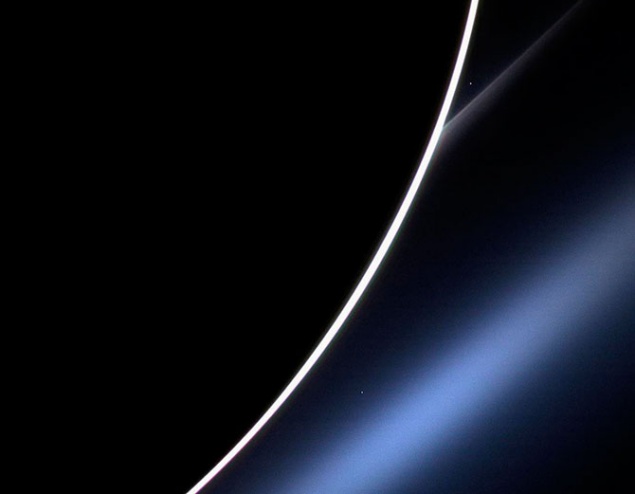
Titan - the largest moon of Saturn, the second largest moon in the Solar System (after Jupiter's moon Ganymede), is the only one besides the earth, the body in the solar system, for which proved the existence of liquid on the surface. The photo was taken with the Cassini spacecraft automatic 3 September 2012.
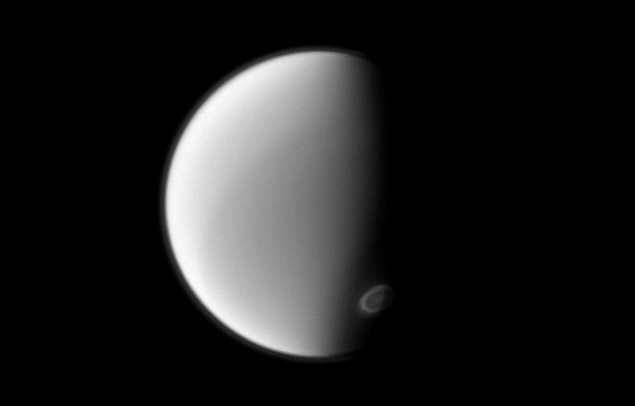
What happens at the north pole of Saturn? Some strange cloud with a complex structure formed vortex. These clouds are the focus of an unusual hexagonal structure of the clouds surrounding the north pole of Saturn. The picture was taken with the Cassini spacecraft automatically November 27 2012.
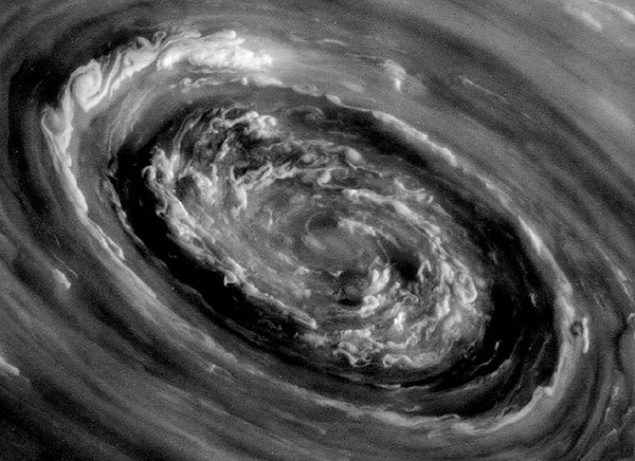
Saturn, Dec. 18, 2012. It relates to a planetary type gas: it consists mainly of gas and has a solid surface. The equatorial radius of the planet is 60 to 300 km, the mass of Saturn's 95 times the mass of our Earth.

Plasma loops on the Sun, 17 October 2012. They are so huge that they could encircle several planets the size of Earth.

Source: loveopium.ru
Due to the astronauts and to all mechanical automatic scouts in space, we have the opportunity to see the "family" pictures of our solar system.

This Pan-STARRS - the solar non-periodic comet. In March 2013 it can be seen with the naked eye, while it was near perihelion. Named in honor of her telescope Pan-STARRS, located on the island of Maui (Hawaii).
This picture of the comet made March 15, 2013 from the machine Stereo Behind, is part of one of the most unusual projects to study the sun. For example, one unit orbits located slightly closer to the Sun, the Earth, the other - a little further. As a result, Stereo Ahead and Stereo Behind send pictures taken from different angles simultaneously. This allows you to create a three-dimensional picture of the observations.

The release of the substance from the solar corona - the outer atmosphere of the Sun, November 19 2012.

Mercury - the closest planet to the Sun of the Solar System. The physical characteristics of Mercury resembles the Moon. It has no natural satellites, but there is a very thin atmosphere. The temperature on Mercury's surface ranges from -180 to +430 ° C. The photo was taken from the American automatic interplanetary station for the study of Mercury Messenger.

Mercury - the smallest of the terrestrial planets. Its radius is only 2440 ± 1.0 km, which is less than the radius of Jupiter's moon Ganymede and Saturn's moon Titan. Comparative sizes of the planets (left to right: Mercury, Venus, Earth, Mars):

Kertész crater on Mercury. It is named in honor of Andre Curtis (Andre Kertesz), the American photographer of Hungarian origin. The diameter of the crater is 33 km away.

This is Venus - the second planet of the inner solar system. Its relative dimensions shown in the 4 th pictures. Venus is classified as Earth-like planets, and sometimes it is called "Earth's sister planet" because the two planets are similar in size, gravity and composition. In space standards Venus - a young planet, and the surface of Venus about 500 million years.
In ancient times, Venus is believed to be warmed up so that like Earth's oceans, which are believed she had completely evaporated, leaving behind a barren landscape with lots of rocks plitopodobnyh. The atmospheric pressure on the surface of Venus to 92 times greater than in the world.

Gamma-Gruytuyzen Crater on the Moon on October 28, 2012. Its diameter - 20 km.

Photo of our Earth from meteorological satellites of EUMETSAT 29 January 2013.

Japanese astronaut Akihiko Hoside went into space with the ISS on November 1, 2012. Contrary to popular conceptions, the space is not completely empty space - in it there is a very low density of some particles (mostly hydrogen), and electromagnetic radiation. Also, there is still no consensus on what constitutes a factor in the beginning of the cosmos, as the atmosphere is gradually diluted as the distance from the Earth's surface.
According to NASA scientists, contrary to popular belief, if it enters the open space without a protective suit people will not freeze, do not explode and instantly lost consciousness, his blood boils. Instead, there will be a quick death from lack of oxygen.

Northern Lights, Alaska, March 17, 2013. 1000-1100 km - the maximum height of auroras visible from the last manifestation of the Earth's atmosphere.

Crater Lake - a body of water formed by a volcanic crater filled with water. In this picture, the province of Quebec, made from the satellite, shows two circular crater lake is not covered with snow - Pingualuit and Couture. Both craters were formed millions of years ago by the impact of meteorites on the Earth's surface.

The plane on a background of the rising moon, February 25 2013.

Next from the falling meteorite in Chelyabinsk, February 15 2013.

The test rocket launch "Antares", developed by the American company Orbital Sciences Corporation, and is intended to deliver cargo to the International Space Station on April 21, 2013. This launch we have already talked in detail.

7 December 2012 it was 40 years since the launch of "Apollo 17" - manned spacecraft, which has been carried out the sixth and last in the "Apollo program" the landing of men on the moon. This photo was taken in 1972 on board the ship "Apollo 17". It is seen as the Earth rises above the lunar horizon.

Self rover Curiosity - agent seeking life on Mars, February 3, 2013.

For the rover Curiosity watching spacecraft Mars Reconnaissance Orbiter, located on the Martian orbit. In this picture there are traces of the tracks of the rover on the surface of the Red Planet on January 2, 2013.

Eolida or Mount Sharp - Gale Crater central peak on the planet Mars, 20 September 2012. The main objective of the scientific mission of the rover Curiosity is a research area of the foot of Mount Sharp.

February 8, 2013 the American rover Curiosity to Mars drilled hole (diameter 1.6 cm, depth 6.4 cm) and obtained a sample of the soil.

Ravines on the asteroid Vesta. This is one of the largest asteroids in the main asteroid belt. Among asteroids ranked first by weight and the second largest after Pallas. Vesta was discovered March 29, 1807 by Heinrich Wilhelm Olbers, and at the suggestion of Carl Gauss received the name of the Roman goddess of home and hearth of Vesta.

Sunrise on Saturn. In the upper part of the picture you can see how the edge of the planet Venus appeared. White stripe - Saturn's ring G, consisting of ice and dust, a width of 8 000 km. The photo was taken from the robotic Cassini spacecraft, which was created jointly by NASA, the European Space Agency and the Italian Space Agency.

Titan - the largest moon of Saturn, the second largest moon in the Solar System (after Jupiter's moon Ganymede), is the only one besides the earth, the body in the solar system, for which proved the existence of liquid on the surface. The photo was taken with the Cassini spacecraft automatic 3 September 2012.

What happens at the north pole of Saturn? Some strange cloud with a complex structure formed vortex. These clouds are the focus of an unusual hexagonal structure of the clouds surrounding the north pole of Saturn. The picture was taken with the Cassini spacecraft automatically November 27 2012.

Saturn, Dec. 18, 2012. It relates to a planetary type gas: it consists mainly of gas and has a solid surface. The equatorial radius of the planet is 60 to 300 km, the mass of Saturn's 95 times the mass of our Earth.

Plasma loops on the Sun, 17 October 2012. They are so huge that they could encircle several planets the size of Earth.

Source: loveopium.ru
Tags
See also
Journey through the Solar System (6 photos)
The most successful systems of planets photo
Colonization of other planets: myths and reality
10 unsolved mysteries of the Solar system
Simulation of the Solar system to reveal mysteries of the planets
Planets of the solar system in place of the moon. Part 2 (7 photos)
Around the Solar System
Photos of the planets of the solar system
Why spacecraft orbit
To probe "New horizons" is selected a new target for research

















